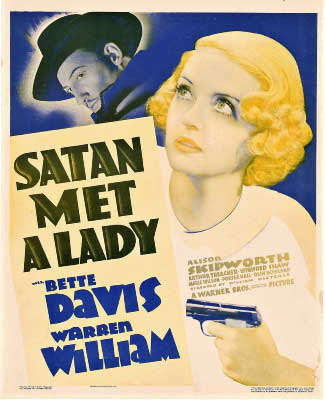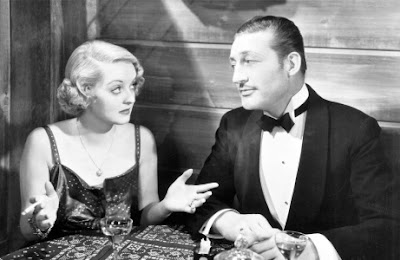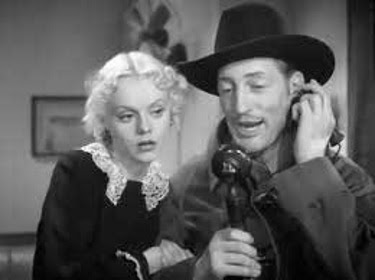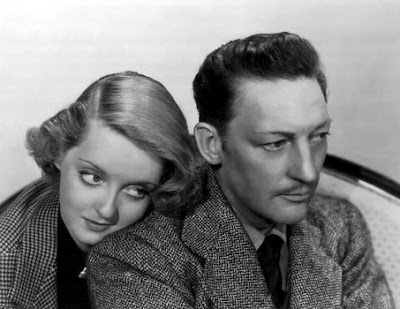Satan Met a Lady

Director: William Dieterle
Year: 1936
Rating: 4.5
Bette Davis reportedly said that this was
her worst film. I don't know about that since I haven't seen lots of her
films, but this has to be in the running. When she got the script - then
titled The Man in the Black Hat - she refused to do it and Warners put her
on suspension till she came around. I can't image it took much of her time
because her appearances are sporadic and are the best parts of a bad film
as she plays the femme fatale with a certain maniacal glee. Watching the
film now of course makes it hard to give it an unbiased viewing because it
is based on Hammet's The Maltese Falcon and five years later Warners made
a classic with the same material. So, when you watch this as much as I like
Warren Williams, he is no Bogart and Alison Skipworth, Arthur Treacher and
an uncredited actor are no Greenstreet, Lorre and Elisha Cook Jr. I wonder
what director William Dieterle thought when he saw John Huston's version.

Warners had also produced The Maltese Falcon
in 1931 with Ricardo Cortez as Spade - so three versions in ten years - to
save money mainly. The first version is a solid semi-serious take on the
book, and maybe that is why they thought they had to do something different
in this one - change the title, change Spade's name to Ted Shane and make
it closer to the Thin Man than the Maltese Falcon in mood if Nora was a cold-blooded
killer. The mood is all off - undecided whether to be a mystery or a light
comedy of quick repartee, most of which fall flatter than a cushion being
sat on. Hell, they even changed it from a statuette of a Falcon to a mythical
Horn filled with jewels. Did the scriptwriter, Brown Holmes, think
that was going to fool the audience? It is such a perfect book that it is
a little painful to watch this and the silly plot changes and dialogue that
Hammett would have discarded in a minute.

Still much of the plot is still in place.
Valerie Purvis (Davis) comes to the Ames Detective Agency to follow a man
and see what he is up to. Shane gladly hands the case over to his partner
(Porter Hall) and continues to flirt with giddy cute secretary (Marie Wilson)
who acts as the comical foil in the film. Hall is found shot dead as is the
man he was following in a graveyard. Shane not at all distraught over his
partner's death comments "Poor dead old Ames, it is the first time he ever
did anything in an appropriate place". Still as Bogart said, when your partner
is killed you have to find the killer. That's just good business. William
is much too jaunty and flippant for the role of Sam Spade but perhaps ok
for Tom Shane.

The usual characters come out of the shadows
- a Tall Englishman (Treacher), a tough old female (Skipworth) and her gunsel
and Purvis. All trying to hire and use Shane to find the Horn. He just keeps
asking everyone for an advance. In one absurd scene that deserves to be in
no film, Shane returns to his apartment to find it torn asunder - everything
ripped up. A knock on the door and it is the Englishman coming to apologize
for what he did and offering Shane a sherry. They chit chat amiable for ten
minutes and he leaves. To do the same to Shane's office. The great scene
in the 1941 version when they all collect together near the end to uncover
the Falcon is instead played out in the rain. And when he fingers the killer
of Ames, it takes place on a train instead of that lovely shot of Mary Astor
with the shadows already placing her in jail. Maybe if I had never read the
book or seen the 1941 film, this would have just come across as a low budget
B film no worse than many - but memory is a cruel taskmaster and I mainly
could only wince as this played out.






